中级宏观经济学 巴罗
- 格式:doc
- 大小:143.00 KB
- 文档页数:7
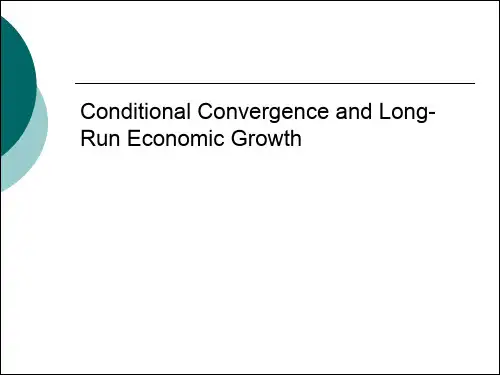
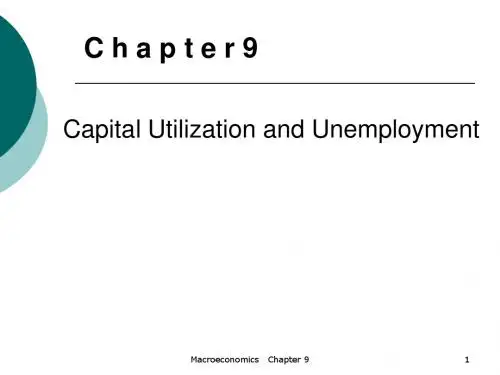
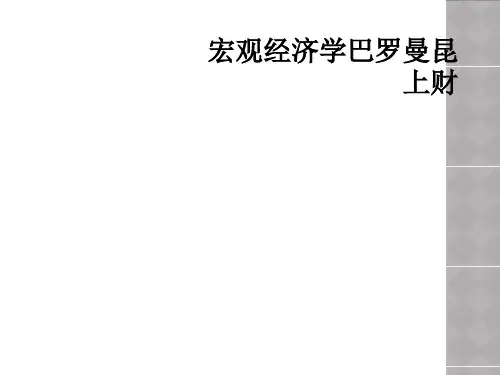
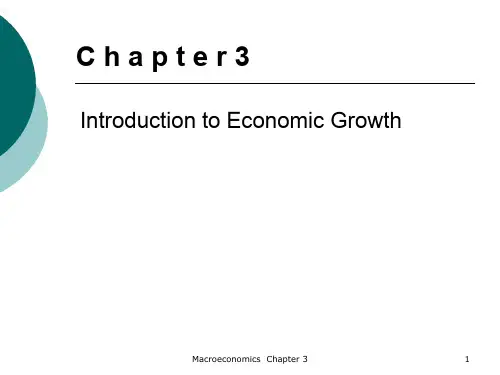
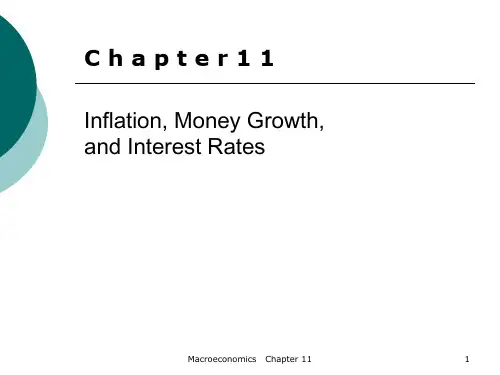

剖析几种经典中级宏观经济学教材鲁峰由于个人兴趣,把国内已经翻译出版的几种主要的中级宏观教材比较了一下,总结一点个人不成熟的学习建议。
本文主要比较的有:多恩布什(6版,人大);伯南克(6版,机械);布兰查德(3版,清华影印);易纲、张帆(人大);威廉森(2版,人大);巴罗(5版,人大);巴罗(现代观点,三联);曼昆(5版,人大);萨克斯(全球视角,三联)。
除后两本粗略翻过以外,其他的均读过。
首先说说自己对这几种教材的一般看法和分类。
类别自然是新凯恩斯与新古典两类,前者有多恩布什、伯南克、布兰查德、曼昆,后者有巴罗、威廉森。
萨克斯是个特例,最后再讲。
其次说说学习顺序以及对不同教材的评价。
个人觉得,我们国内的学生最好由新凯恩斯教材入手,一来与国内教材接轨密切,二来与现实结合紧密,能分析一些简单的政策问题,可以获得学习乐趣,三来如果你不想继续深造,那么新凯恩斯框架在你参与实际工作时能派上用场。
接着,对于那些想继续深造的学生,我坚决推荐必须读上一本新古典的教材。
至于为什么,我不再赘述,对现代经济学稍有了解的人都会知道。
下面,我就几种教材分别评述:在新凯恩斯主义的教材中,多恩布什应该是比较老的,优点是它把新凯恩斯主义的核心模型详细叙述了个遍,例如AD-AS模型的微观基础模型(这里的微观基础模型不同于新古典主义的微观基础)它有全面详细的介绍,而布兰查德就没有。
缺点是全书体系不是很清楚,需要自己细心整理。
曼昆的在体系方面就好了许多,而且也对新凯恩斯主义微观基础模型做了比较详细的探讨,唯一的缺点就是他脱离不了“原理式”的写作风格,因此数理深度稍有欠缺。
布兰查德与多恩布什刚好相反,体系十分严谨,结构十分清晰,论述也很有力,而且布兰查德是最不惮于在教材中运用数学的作者之一,因此他的书在数理模型方面远胜曼昆,唯一的缺点就是缺乏新凯恩斯主义微观基础模型。
伯南克的书在以上三本教材风行以后被翻译过来,就在各方面都显得很平庸了。
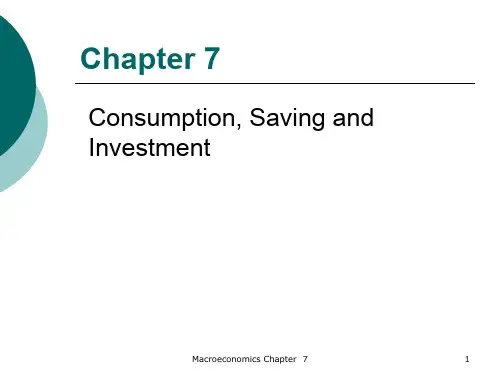
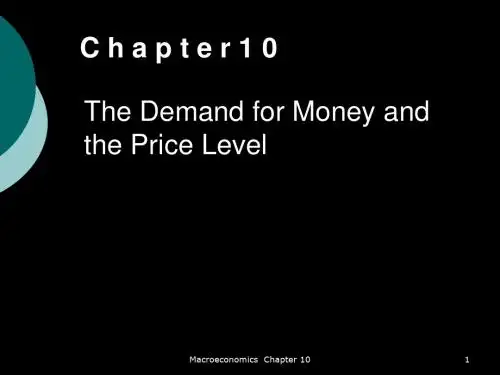
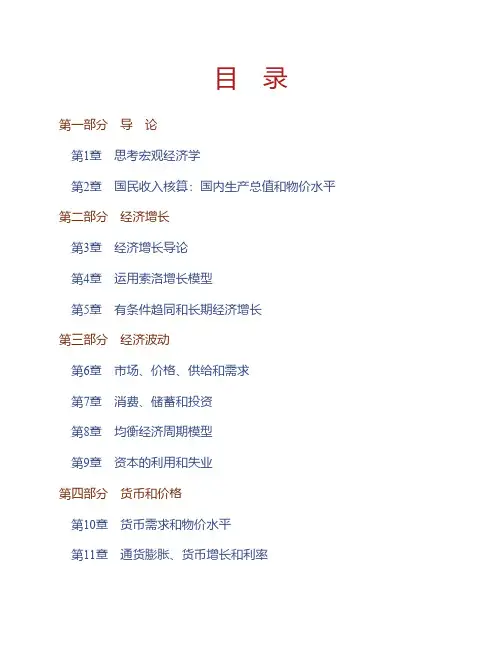
目 录第一部分 导 论第1章 思考宏观经济学第2章 国民收入核算:国内生产总值和物价水平第二部分 经济增长第3章 经济增长导论第4章 运用索洛增长模型第5章 有条件趋同和长期经济增长第三部分 经济波动第6章 市场、价格、供给和需求第7章 消费、储蓄和投资第8章 均衡经济周期模型第9章 资本的利用和失业第四部分 货币和价格第10章 货币需求和物价水平第11章 通货膨胀、货币增长和利率第五部分 政府部门第12章 政府支出第13章 税 收第14章 公共债务第六部分 货币与经济周期第15章 货币与经济周期Ⅰ:价格错觉模型第16章 货币与经济周期Ⅱ:粘性价格与名义工资率第七部分 国际宏观经济学第17章 商品和信贷的世界市场第18章 汇 率第一部分 导 论第1章 思考宏观经济学一、概念题1景气(boom)答:景气(或繁荣)是指在经济周期中,经济活动处于全面扩张,不断达到新的高峰的阶段。
一个完整的经济周期包括繁荣、衰退、萧条、复苏四个阶段。
有时也将复苏阶段和繁荣阶段合称扩张阶段。
经济学家们构建了若干指标来判断经济是否处于景气期,如采购经理人指数(PMI)等。
2经济周期(商业周期)(business cycle)答:经济周期又称经济波动或国民收入波动,指总体经济活动的扩张和收缩交替反复出现的过程。
现代经济学中关于经济周期的论述一般是指经济增长率的上升和下降的交替过程,而不是经济总量的增加和减少。
一个完整的经济周期包括繁荣、衰退、萧条、复苏(也可以称为扩张、持平、收缩)四个阶段。
在繁荣阶段,经济活动全面扩张,不断达到新的高峰。
在衰退阶段,经济短时间内保持均衡后出现紧缩的趋势。
在萧条阶段,经济出现急剧的收缩和下降,很快从活动量的最高点下降到最低点。
在复苏阶段,经济从最低点恢复并逐渐上升到先前的活动量高度,进入繁荣。
衡量经济周期处于什么阶段,主要依据国民生产总值、工业生产指数、就业和收入、价格指数、利息率等综合经济活动指标的波动。
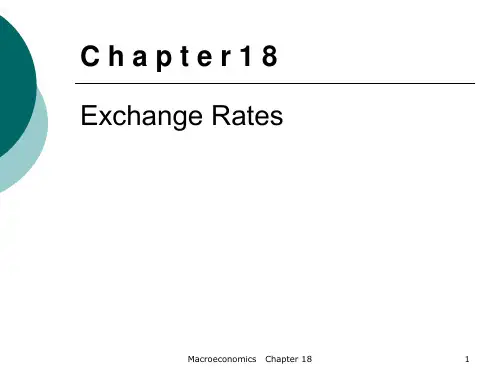
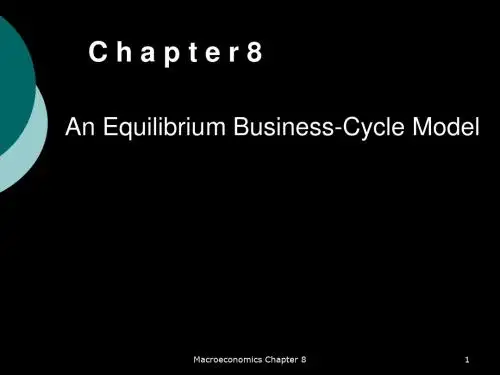
第7章 通货膨胀与利率的引入7.1 复习笔记1.通货膨胀的实证研究(1)为揭示产生通货膨胀的根源,所有货币被自愿持有的条件是:()(),,M P φR Y -+⎛⎫= ⎪⎝⎭L ① 从①式分析,通货膨胀的产生可能源于名义货币存量M 和实际货币需求量φ(R ,Y ,…)的变动。
当名义货币存量M 不变,总产出Y 的下降、持有货币的成本R 的上升以及金融创新都可以引起实际货币需求量的减少,进而影响短期物价水平。
在长期分析中,高速增长的M 亦可能引发通货膨胀。
(2)影响货币实际需求的因素①产出增长率。
不断增长的产出对实际货币余额增长的正面影响,意味着对于给定的货币增长率,产出增长率较高的国家趋向于有较低的通货膨胀率。
②利率R ,即持有货币的成本。
若其他情况不变,利率上升的国家实际货币余额的平均增长率较低。
③通货膨胀率。
通货膨胀率的上升意味着货币实际价值迅速贬值,从而持有货币的成本增大。
因此,通货膨胀上升倾向于使实际货币需求下降。
由此推断,通货膨胀上升的国家实际货币余额的平均增长率是低的。
2.作为货币现象的通货膨胀米尔顿·弗里德曼认为,“通货膨胀在任何时候,任何地方都是货币现象。
”该论断包括以下要点:(1)不排除诸如供给冲击之类的实际扰动对物价水平的冲击,这些冲击在特定时期对物价变动的影响比长期通货膨胀显得重要。
(2)货币现象一词可视为体现出影响货币实际需求以及货币名义供给量的变量术语。
(3)最终要分析货币增长为何在不同的国家、不同的时间走向不同。
3.真实的与预期的通货膨胀时期t与t+1之间的通货膨胀率定义为:πt=(P t+1-P t)/P t②通货膨胀率等于时期t与t+1之间物价水平的变化率。
对②式进行移项,解出下一时期的物价水平为:P t+1=(1+πt)P t③物价在一个时期以因子1+πt上升,因子为正,物价上升,出现通货膨胀;因子为负,物价下降,出现通货紧缩。
人们在进行消费、投资决策时,常形成价格预测或通货膨胀预期,用符号表πt e示。
BarroChapter 1TRUE/FALSE1. Macroeconomists study the amount of employment and unemployment.2. Macroeconomists study the price of individual products like beer.3. When the gross domestic product is growing, it is called inflation.4. A recession is when GDP is falling toward a trough.5. If price is below equilibrium in a market, then quantity supplied will be less than quantity demanded.MULTIPLE CHOICE1. Macroeconomics deals with:a. how individual markets work.b. the overall performance of the economy.c. relative prices in different markets.d. substitution of one good for another good.2. Macroeconomics includes the study of:a. the general price level. c. the relative price of goods.b. the price of individual goods. d. all of the above.3. Macroeconomists study:a. the determination of the economy’s total production.b. unemploymentc. the general price level.d. all of the above.4. Macroeconomists study:a. the determination of real GDP.b. the production of specific goods.c. the relative production in different markets.d. all of the above.5. Among the prices that macroeconomist study are:a. the price of coffee. c. the interest rate.b. the price of tea. d. all of the above.6. Among the prices that macroeconomists study are:a. the wage rate. c. the exchange rate.b. the interest rate.d. all of the above.7. Monetary policy involves:a. the government’s expenditure. c. determining the quantity of money.b. taxation.d. the fiscal deficit.8. The unemployment rate is:a. the fraction of the population with no job. b. the fraction of those seeking work with no job.c. the rate of growth of those with no job.d. the rate of growth of those seeking work.9. Fiscal policy involves:a. determining exchange rates. c. interest rates.b. government expenditures.d. all of the above.10. The rate of growth of GDP for period t is:a. c.b.d.11. Variations in real GDP are called:a. inflation. c. economic fluctuations.b. deflation. d. all of the above.12. When GDP is expanding toward a high point it is called a[n]:a. depression. c. recession.b. boom. d. inflation.13. When real GDP falls toward a low point or trough it is called a[n]:a. boom. c. inflation.b. recession. d. expansion.14. During recessions the unemployment rate:a. declines. c. is stable.b. increases.d. is unmeasureable.15. The unemployment rate in the US was highest in the:a. 1990s c. 1980sb. 1930s d. 1950s16. The inflation rate for year t is:a.c.b.d.17. A variable that macroeconomists want to model is a[n]a. endogenous variable. c. exogenous variable.b. dummy variable. d. predetermined variable.18. A variable taken as given in a model is a[n]a. endogenous variable. c. exogenous variable.b. dummy variable. d. dichotomous variable.19. The dollar price paid to use capital is known as:a. the interest rate. c. the rental price of capital.b. the exchange rate. d. the general price level.20. The price of labor is the:a. exchange rate. c. interest rate.b. wage rate. d. the rental price.Figure1.1Price21. In Figure1.1 the equilibrium price is:a. 2 c. 7b. 5 d. 022. In Figure1.1 the equilibrium quantity isa. 5 c. 7b. 2 d. 823. In Figure1.1 if price is 7, thena. the market is in equilibrium. c. there is excess quantity demanded.b. there is excess quantity supplied. d. the market clears.24. In Figure1.1 if the price is 2, then:a. the market is in equilibrium. c. there is excess quantity demanded.b. there is excess quantity supplied. d. the market clears.25. In Figure1.1, if price is 7, then quantity demanded is:a. 2. c. 3.b. 7. d. 8.26. In Figure1.1, if price is 7, then quantity demanded is:a. 2. c. 3.b. 7. d. 8.27. In Figure1.1, if price is 7, then quantity supplied is:a. 2. c. 3.b. 7. d. 8.28. In Figure1.1, if price is 2, then quantity demanded is:a. 2. c. 3.b. 7. d. 8.29. In Figure1.1, if price is 2, then quantity supplied is:a. 2. c. 3.b. 7. d. 8.30. In Figure1.1, if price is 5, then quantity demanded is:a. 2. c. 3.b. 7. d. 5.31. In Figure1.1, if demand falls, then equilibrium:a. price and quantity fall. c. price falls and quantity rises.b. price and quantity rise. d. prices rises and quantity falls.32. In Figure1.1 if supply increases, then equilibrium:a. price and quantity fall. c. price rises and quantity falls.b. price and quantity rise. d. price falls and quantity rises.33. A possible order of events in an economy over time is:a. expansion, recession, peak, expansion. c. expansion, peak, trough, recession.b. recession, trough, expansion, peak. d. recession, trough, peak, expansion.34. A trough in an economy is when the economy:a. is growing. c. is contracting.b. reaches a low point. d. reaches a high point.35. A peak in an economy is when the economy:a. is growing. c. is contracting.b. reaches a low point. d. reaches a high point.36. A possible order of economic fluctuations is:a. recession, boom, expansion, trough. c. recession, trough, expansion, peak.b. expansion, recession, boom, trough. d. expansion, trough, recession, peak.37. If prices are sticky:a. the market quickly sticks at equilibrium. c. the market only slowly moves towardequilibrium.b. the market clears quickly. d. all of the above.38. In an economic model:a. endogenous variables feed into a model toaffect exogenous variable. c. exogenous and endogenous variables feedinto the model.b. exogenous variables feed into a model toaffect endogenous variables.d. none of the above.39. A price taker:a. takes the price to the market. c. accepts the market price and decideswhether and how much to buy or sell.b. controls the market price. d. accepts the market quantity and sets price.40. A macroeconomist would study the:a. price of cars. c. the sales of beer.b. the market for shoes. d. none of the above. SHORT ANSWER1. What types of economic issues do macroeconomists study?2. How is the annual inflation rate calculated?3. What is the rate of growth of real GDP?4. Describe what happens when demand or supply increase in a market.5. What are exogenous and endogenous variables?。
BarroChapter 4TRUE/FALSE1. An increase in the depreciation rate affects the steady-state capital per worker the same way as anincrease in the population growth rate.2. If the saving rate increases, then the optimum level of capital per worker falls.3. An increase in technology causes the real GDP per worker to increase during the transition to thesteady-state.4. An increase in technology cause the growth in real output per worker to be higher in the long run orsteady-state.5. The Solow model of growth says that poorer economies should over time converge towards richerones in terms of real output put worker.MULTIPLE CHOICE1. In the revised version of the Solow growth model the optimal level of capital stock per worker dependson:a. the saving rating. c. population growth rate.b. the depreciation rate. d. all of the above.2. In the revised version of the Solow growth model the optimal level of the capital stock per workerdepends on:a. monetary growth. c. the saving rate.b. government spending. d. all of the above.3. In the revised version of the Solow growth model the optimal level of the capital stock per workerdepends on:a. monetary growth. c. appreciation in the stock market.b. the depreciation rate. d. all of the above.4. In the revised version of the Solow growth model the optimal level of the capital stock per workerdepends on:a. the population growth rate. c. inflation.b. government spending. d. all of the above.5. In the Solow growth model as a growing economy transitions to the steady state:a. the average product of capital falls. c. the average product of labor falls.b. output per worker is constant. d. the growth rate of capital is equal to zero.6. In the Solow growth model in the steady state the growth rate of capital per worker, k*, is:a. rising. c. fluctuating.b. falling. d. zero.7. In the Solow growth model, if technology, A, improves, then in the steady state:a. output per worker grows faster. c. capital per worker grows faster.b. output per worker grows at the same rate,zero.d. all of the above.8. In the Solow growth model, if the population growth rate, n, increases, then in the steady state:a. output per worker grows slower. c. capital per worker grows at the same rate,zero.b. capital per worker grows slower. d. all of the above.9. In the Solow growth model, if the depreciation rate, , increases, then in the steady state:a. output per worker grows at the same rate,zero.c. capital per worker grows faster.b. output per worker grows faster. d. all of the above.10. In the Solow growth model, if labor input, L(0), increases, then in the steady state:a. output per worker grows faster. c. capital per worker grows faster.b. capital per worker grows at the same rate,zero.d. all of the above.11. In the Solow growth model in the steady state the growth rate of output per worker, y*, is:a. rising. c. constant at zero.b. falling. d. fluctuating.12. If the saving rate increases in the Solow growth model, then during the transition to the steady state:a. the growth rate of capital per worker willincrease. c. the growth rate of capital per worker isconstant.b. the growth rate of capital per worker willdecrease. d. the growth rate of capital per worker iszero.13. If the saving rate increases in the Solow growth model, then in the steady state the growth rate ofcapital per worker is:a. constant. c. zero.b. unchanged. d. all of the above.14. If the saving rate increases in the Solow growth model, then in the steady state the growth rate ofcapital per worker is:a. higher. c. lower.b. unchanged. d. rising.15. If the saving rate increases in the Solow growth model, then in the steady state:a. capital per worker and the growth ofcapital will be higher. c. capital per worker will be higher but thegrowth rate of capital will be lower.b. capital per worker will be higher but thegrowth rate of capital will remain the d. capital per worker will be lower but thegrowth rate of capital will be higher.same at zero.16. In the Solow growth model during the transition an increase in technology:a. lowers the growth rate of capital perworker. c. raises the growth rate of capital perworker.b. does not change the growth rate of capitalper worker. d. causes the growth rate of capital to fall tozero per worker.17. In the Solow growth model during the transition an increase in technology:a. lowers the growth rate of output perworker. c. raises the growth rate of output perworker.b. does not change the growth rate of outputper worker. d. causes the growth rate of output perworker to fall to zero.18. In the Solow growth model during the transition an increase in technology:a. lowers the growth rate of capital andoutput per worker. c. raises the growth rate of capital and outputper worker.b. raises the growth rate of capital perworker and lowers the growth rate of output per worker. d. lowers the growth rate of capital perworker and raises the growth rate ofoutput per worker.19. In the Solow growth model in the short run, an increase in the labor input L(0):a. increases the growth rate of real output perworker. c. reduces the growth rate of capital perworker.b. increases s•(y/k). d. decreases s+ n.20. In the Solow growth model in the short run, an increase in the labor input L(0),a. decrease the growth rate of real output perworker. c. increase the growth rate of capital perworker.b. increases s•(y/k). d. decrease s+ n.21. In the Solow growth model in the long run or steady state, an increase in the labor input L(0) will,a. increase the capital stock. c. not affect real output per worker.b. lead to a growth of the capital stock perworker of zero.d. all of the above.22. In the Solow growth model in the long run or steady state, an increase in the labor input L(0) will,a. decrease the capital stock. c. not change real output per worker.b. lead to a positive growth of the capitalstock per worker.d. all of the above.Figure 4.1Determinantsof k/ks + ns(y/k)K/L = k23. In Figure 4.1 the distance between s•(y/k) and s+ n is the growth of capital per worker:a. in the transition. c. in the steady state.b. in the long-run. d. none of the above.24. In Figure 4.1 if the saving rate increases, thena. the curve s+ n increases. c. the curve s+ n decreases.b. the curve s+ n becomes steeper. d. the curve s+ n becomes flatter.25. In Figure 4.1, if the saving rate increase, then:a. s•(y/k) increases. c. s•(y/k) decreases.b. s•(y/k) gets steeper. d. s•(y/k) becomes vertical.26. In Figure 4.1, if the saving rate increase, then:a. s•(y/k) and s+ n increase. c. s•(y/k) and s+ n decrease.b. s•(y/k) increases while s+ n decreases. d. s•(y/k) decreases while s+ n increase.27. In Figure 4.1, if the technology improves, then:a. s•(y/k) increases. c. s•(y/k) decreases.b. s+ n increases. d. s+ n decreases.28. In Figure 4.1, if the initial amount of labor increases, then:a. s•(y/k) increases. c. s+ n increases.b. K/L moves away from the optimum. d. the growth rate of population increases.29. In Figure 4.1, if the initial amount of labor increases, then in the steady state:a. the growth rate of capital per workerincreases. c. the growth rate of output per worker is thesame.b. the growth rate of output per worker rises. d. the population growth rate rises.30. In Figure 4.1, if the initial amount of labor increases, then during the transition to they steady state:a. the growth rate of capital per worker andoutput per worker increase. c. the growth rate of capital per workerincreases and output per worker decrease.b. the growth rate of capital per worker andoutput per worker.decrease. d. the growth rate of capital per workerdecreases and output per worker increases.31. In Figure 4.1, if the population growth rate increases, then:a. s•(y/k) increases. c. s+ n increases.b. K/L moves away from the optimum. d. the initial amount of labor increases.32. In Figure 4.1, an increase in productivity:a. raises the steady state growth rate ofcapital per worker. c. lowers the steady state growth rate ofoutput per workerb. does not change steady-state growth ratesof output or capital per worker.d. lowers the steady-state level of capital.33. In Figure 4.1, an increase in the depreciation rate has the same effects as:a. an increase in the savings rate. c. an increase in the population growth rate.b. an increase in the initial amount of labor. d. all of the above.34. In Figure 4.1, an increase in technology:a. increases s•(y/k) c. increases s+ n.b. decrea ses s•(y/k) d. decreases s+ n.35. In Figure 4.1, an increase in technology:a. increases k*. c. decreases k*.b. does not affect k*. d. makes k* zero.36. In Figure 4.1, an increase in the population growth rate:a. increases k*. c. decreases k*.b. does not affect k*. d. makes k* zero.37. In Figure 4.1, an increase in the depreciation rate:a. increases k*. c. decreases k*.b. does not affect k*. d. makes k* zero.38. In Figure 4.1, if the technology improves, then:a. the steady-state capital stock increases. c. the steady-state growth in output perworker increases.b. the steady-state growth in capital perworker increases.d. the population growth rate increases.39. Convergence of economies is the tendency according to the Solow growth model for:a. richer countries to buy up all the capital inpoorer countries. c. poorer economies to grow faster in termsof real GDP per capita than richercountries.b. richer countries to tend decline aspollution damage increases. d. the tendency for richer economies toshrink to the size of poorer economies.40. Since 1960 the data show a tendency of output per worker to converge:a. in all countries in the world. c. in OECD countries.b. countries with different savings rates. d. none of the above.41. The data show a tendency of output per worker to converge:a. among US States from 1880 to 2000. c. in OECD countries from 1960 to 2000.b. countries with similar economies. d. all of the above.42. Convergence will not happen if economies around the world have:a. different saving rates. c. different population growth rates.b. different technologies. d. all of the above.43. Convergence will not happen if economies around the world have:a. different saving rates. c. different levels out labor input.b. different average products of capital in thetransition.d. all of the above.44. Convergence will not happen if economies around the world have:a. different capital labor ratios in during thetransition.c. different levels out labor input.b. different population growth rates. d. all of the above.45. Convergence will not happen if economies around the world have:a. different average products of capitalduring the transition.c. different levels of technology.b. different initial levels of labor input. d. all of the above.46. Convergence will not happen if economies around the world have:a. different average products of capitalduring the transition. c. different optimum levels of capital perworker, k*.b. different initial levels of labor input. d. all of the above.47. Economies are said to have converged if they:a. have the same growth rate in thetransition.c. have the same saving rate.b. have the same capital per worker, k*, inthe steady state.d. all of the above.48. When converging economies:a. have the same growth rate of capital perworker. c. have the same growth rate of output perworker.b. the same steady state capital per worker,k*.d. all of the above.49. Convergence will not happen if economies around the world have:a. different savings rates. c. different optimum levels of capital perworker, k*.b. different population growth rates. d. all of the above.50. Convergence will not happen if economies around the world have:a. different capital per worker growth ratesin the transition.c. different initial starting points.b. different initial levels of labor input, L(0). d. none of the above.SHORT ANSWER1. What are the short and long run effects of an increase in the saving rate in the Solow growth model?2. What are the long and short run effects of an increase in technology, A, in the Solow growth model?3. What are the long run and short run effects to an increase in the labor input in the Solow growthmodel?4. What are the long and short run effects of an increase in the population growth rate the Solow growthmodel?5. Why does the Solow growth model show the economies of poor countries tend to converge over timetoward richer ones in terms of per capita and real GDP per worker?。
BarroChapter 9TRUE/FALSE1. When the capital utilization rate, , is added to the model the interest rate becomes countercyclical.ANS: F PTS: 1 DIF: 2 NAT: Analytic2.The higher the capital utilization rate,, the greater the depreciation rate of capital, .ANS: T PTS: 1 DIF: 2 NAT: Analytic3. An increase in unemployment insurance payments decreases effective real income while unemployed.ANS: F PTS: 1 DIF: 1 NAT: Analytic4. The duration of unemployment is the number unemployed divided by the labor force.ANS: F PTS: 1 DIF: 1 NAT: Analytic5. Unemployment will exist in an market clearing model, if it takes some search time for workers to findjobs.ANS: T PTS: 1 DIF: 2 NAT: AnalyticMULTIPLE CHOICE1. The capital utilization rate is:a. the rate capital wears out in a particularperiod. c. the percentage of capital used inproduction.b. the depreciation rate. d. all of the above.ANS: C PTS: 1 DIF: 1 NAT: Analytic2. When the capital utilization rate, , increases then:a. GDP increases. c. (hours per period)•(number of machines)increases.b. machines are in use more hours perperiod.d. all of the above.ANS: D PTS: 1 DIF: 2 NAT: Analytic3. When the capital utilization rate, , increases then:a. GDP decreases. c. (hours per period)•(number of machines)increases.b. machines are in use fewer hours perperiod.d. all of the above.ANS: C PTS: 1 DIF: 2 NAT: Analytic4. When the capital utilization rate, , increases then:a. GDP decreases. c. (hours per period)•(number of machines)decreases.b. machines are in use more hours perperiod.d. all of the above.ANS: B PTS: 1 DIF: 2 NAT: Analytic5. When the capital utilization rate, , increases then:a. GDP increases. c. (hour per period)•(number of machines)decreases.b. machines are in use fewer hours perperiod.d. all of the above.ANS: A PTS: 1 DIF: 2 NAT: Analytic6. When we allow a capital utilization rate, , less than 100%, then the rate of return form owningcapital becomes:a. (R/P) - . c. (R/P)•- .b. (R/P)•- (). d. (R/P) - ().ANS: B PTS: 1 DIF: 2 NAT: Analytic7. An owner of capital might set their capital utilization rate below 100% because:a. the depreciation rate goes up with thecapital utilization rate. c. to make time available for maintainingtheir capital.b. machines wear out faster when used moreintensively.d. all of the above.ANS: D PTS: 1 DIF: 2 NAT: Analytic8. The optimal capital utilization rate, , is that where:a. (R/P)•- () is maximized. c. (R/P)•> ()b. (R/P)•= () d. (R/P)•< ()ANS: A PTS: 1 DIF: 3 NAT: Analytic9. the net real income from supplying capital services is:a. (R/P)•K - ()K. c. ()K - (R/P)•b. (R/P)•K + (). d. (R/P)•K • ()KANS: A PTS: 1 DIF: 3 NAT: Analytic10. Higher capital utilization rates may raise the user costs of capital because higher utilization rates mayimply:a. operating at inconvenient times. c. operating when complementary serviceslike transporters are unavailable or moreexpensive.b. paying overtime to employees operatingthe machines.d. all of the above.ANS: D PTS: 1 DIF: 2 NAT: Analytic11. Higher capital utilization rates may raise user costs of capital because higher utilization rates mayimply:a. operating at inconvenient times. c. less highway congestion.b. off-peak utility prices. d. all of the above.ANS: A PTS: 1 DIF: 2 NAT: Analytic12. Higher capital utilization rates may raise user costs of capital because higher utilization rates mayimply:a. less highway congestion. c. operating when complementary serviceslike transportation are unavailable or moreexpensive.b. off peak utility prices. d. all of the above.ANS: C PTS: 1 DIF: 2 NAT: Analytic13. Higher capital utilization rates may raise user costs of capital because higher utilization rates mayimply:a. less highway congestion. c. off peak utility prices.b. paying overtime to employees operatingthe machines.d. all of the above.ANS: B PTS: 1 DIF: 2 NAT: Analytic14. GDP rises can rise in an expansion due to:a. an increase in technology, A, directlyincreasing GDP. c. an increase in technology, A, causing anincrease in the capital utilization rate, the quantity of capital services and GDP.b. an increase in technology, A, causing anincrease in labor, L and GDP.d. all of the above.ANS: D PTS: 1 DIF: 2 NAT: Analytic15. The model predicts the capital utilization rate, , is:a. acyclical. c. countercyclical.b. procyclical. d. exogenous.ANS: B PTS: 1 DIF: 2 NAT: Analytic16. The model predicts that with a negative shock to technology, the capital utilization rate, , will:a. rise as GDP rises. c. rise as GDP falls.b. fall as GDP falls. d. fall as GDP rises.ANS: B PTS: 1 DIF: 2 NAT: Analytic17. After the capital utilization rate, , is included in the model, the interest rate:a. is still procyclical. c. becomes procyclical.b. is still countercyclical. d. becomes countercyclical.ANS: A PTS: 1 DIF: 3 NAT: Analytic18. The US data from 1948 to 2006 shows the capital utilization rate, , is:a. procyclical as the model predicts. c. procyclical the opposite the modelpredicts.b. countercyclical as the model predicts. d. countercyclical the opposite as the modelpredicts.ANS: A PTS: 1 DIF: 2 NAT: Analytic19. The model predicts that with a positive shock to technology the capital utilization rate, , willa. fall as GDP falls. c. rise as GDP rises.b. fall as GDP rises. d. rise as GDP falls.ANS: C PTS: 1 DIF: 2 NAT: Analytic20.If the rental price of capital increases, then the capital utilization rate, ,:a. also increases. c. remains the same.b. decreases. d. depends on whether the substitution rate isgreater than the income effect.ANS: A PTS: 1 DIF: 2 NAT: Analytic21. The unemployment rate is:a. the number of workers in the labor forceunemployed divided by the number ofworkers employed. c. the number of workers in the labor forceunemployed divided by the labor force.b. the number of workers employed divideby the number of workers in the laborforce unemployed. d. the labor force divided by the number ofworkers in the labor force unemployed.ANS: C PTS: 1 DIF: 2 NAT: Analytic22. The vacancy rate in the labor market is:a. the number of job openings divided by thenumber of unemployed people in the laborforce.c. the ratio of open jobs to filled jobs.b. the number of job openings divided by thenumber of workers in the labor force. d. the ratio of open jobs to the total numberof jobs that employers want occupied.ANS: D PTS: 1 DIF: 2 NAT: Analytic23. If the labor force is 100 million, there are 95 million people employed, there are 98 million jobs thatemployers want occupied, then the number of unemployed workers in the labor force is:a. 5 million. c. 2 million.b. 3 million. d. none of the above.ANS: A PTS: 1 DIF: 1 NAT: Analytic24. If the labor force is 100 million, there are 95 million people employed, there are 98 million jobs thatemployers want occupied, then the number of vacancies is:a. 5 million. c. 2 million.b. 3 million. d. none of the above.ANS: B PTS: 1 DIF: 1 NAT: Analytic25. If the labor force is 100 million, there are 95 million people employed, there are 98 million jobs thatemployers want occupied, then the unemployment rate is:a. 3%. c. 5.3%.b. 5%. d. none of the above.ANS: B PTS: 1 DIF: 2 NAT: Analytic26. If the labor force is 100 million, there are 95 million people employed, there are 98 million jobs thatemployers want occupied, vacancy rate is:a. 5%. c. 3.1%.b. 3.2%. d. 3%.27. If the labor force is 100 million, there are 94 million people employed, there are 99 million jobs thatemployers want occupied, then the vacancy rate is:a. 5%. c. 5.3%b. 5.1% d. 1%ANS: B PTS: 1 DIF: 1 NAT: Analytic28. One minus the unemployment rate, 1 - u, is:a. the vacancy rate. c. the employment rate.b. the labor force. d. the level of employment.ANS: C PTS: 1 DIF: 1 NAT: Analytic29. Unemployment can exist in a market clearing model, if:a. there are frictions in the labor market. c. we allow for differences among workersand jobs.b. it takes some search time for workers tod. all of the above.find jobs.ANS: D PTS: 1 DIF: 2 NAT: Analytic30. Unemployment can exist in a market clearing model, if:a. the labor market is in disequilibrium. c. we allow for differences among workersand jobs.d. all of the above.b. we allow capital utilization of less than100%.ANS: C PTS: 1 DIF: 2 NAT: Analytic31. Unemployment can exist in a market clearing model, if:a. there are frictions in the labor market. c. the labor market is in equilibrium.b. the labor supply curve is upward sloping. d. all of the above.ANS: A PTS: 1 DIF: 2 NAT: Analytic32. Unemployment can exist in a market clearing model, if:a. all workers are identical. c. the labor supply curve is upward sloping.b. it takes some search time for workers tod. all of the above.find jobs.ANS: B PTS: 1 DIF: 2 NAT: Analytic33. A worker will accept a job offer, if the real wage offer is above:c. the worker’s reservation wage.a. the worker’s effective real income whend. the average wage in the economy.b. the wage the worker earned in their lastjob.ANS: C PTS: 1 DIF: 1 NAT: Analytic34. An increase in a worker’s effective real income while unemployed,, will cause the worker’s:a. real wage offers to increase. c. real reservation wage to increase.b. real wage offers to decrease. d. real reservation wage to decrease.35. We expect that an increase in the effective real income while unemployed ,a. will reduce the job-finding rate. c. increase real wage offers.b. will increase the job-finding rate. d. decrease real wage offers.ANS: A PTS: 1 DIF: 2 NAT: Analytic36. A decrease in workers’ effective real incomes while unemployed, , will:a. lower the job finding rate and raise theexpected duration of unemployment. c. raise the job finding rate and lower theexpected duration of unemployment.b. lower the job finding rate and the expectedduration of unemployment. d. raise the job finding rate and the expectedduration of unemployment.ANS: C PTS: 1 DIF: 2 NAT: Analytic 37. A negative shock to productivity, A, will:a. lower the job finding rate and raise theexpected duration of unemployment. c. raise the job finding rate and lower theexpected duration of unemployment.b. lower the job finding rate and the expectedduration of unemployment. d. raise the job finding rate and the expectedduration of unemployment.ANS: A PTS: 1 DIF: 2 NAT: Analytic38. Job separations can be due to:a. an adverse shock to the firm’s productionfunction. c. a change in a worker’s circumsta nces suchas changing locations.b. the job being temporary from the start likea seasonal job.d. all of the above.ANS: D PTS: 1 DIF: 2 NAT: Analytic 39. Job separations can be due to:a. a positive shock to the firm’s productionfunction. c. a ch ange in a worker’s circumstances suchas changing locations.b. an increase in technology. d. all of the above.ANS: C PTS: 1 DIF: 2 NAT: Analytic40. Job separations can be caused by:a. an adverse shock to the firm’s productionfunction.c. increased technology, A.b. foreign competition. d. all of the above.ANS: A PTS: 1 DIF: 2 NAT: Analytic41. In the Barro model, the natural rate of unemployment is the unemployment rate:a. where job findings equal job separations. c. the job separation rate equals the jobfinding rate.b. job findings are maximized. d. job separations are minimized.ANS: A PTS: 1 DIF: 2 NAT: Analytic42. If the job separation rate is 0.02 and the job finding rate is 0.3, then the natural rate of unemploymentis:a. 6.25% c. 6.67%b. 15% d. none of the above.ANS: A PTS: 1 DIF: 3 NAT: Analytic43. If the job separation rate is 0.03 and the job finding rate is 0.7, then the natural rate of unemploymentis:a. 4.2% c. 23.3%b. 4.1% d. none of the above.ANS: B PTS: 1 DIF: 3 NAT: Analytic44. In the Barro model, the natural rate of unemployment is:a. positively related to that job separationsrate.c. fixed.b. zero. d. positively related to the job finding rate.ANS: A PTS: 1 DIF: 2 NAT: Analytic45. In the Barro model, the natural rate of unemployment is:a. negatively related to that job separationsrate.c. fixed.b. zero. d. negatively related to the job finding rate.ANS: D PTS: 1 DIF: 2 NAT: Analytic46. In US data vacancies from 1954 to 2006 as measure by the help-wanted index are:a. procyclical as the model predicts. c. procyclical the opposite the modelpredicts.b. countercyclical as the model predicts. d. countercyclical the opposite the modelpredicts.ANS: A PTS: 1 DIF: 2 NAT: Analytic47. Discouraged workers are:a. those that are unemployed. c. those who have dropped out of the laborforce.b. those that are underemployed. d. those who are under paid.ANS: C PTS: 1 DIF: 1 NAT: Analytic48. The job-finding rate is:a. the number of hires per month divided bythe number unemployed. c. the number of hires per month divided bythe unemployment rate.b. the number of hires per month divided bythe number employed. d. the number of hires per month divided bythe employment rate.ANS: A PTS: 1 DIF: 2 NAT: Analytic49. The US data from December 2000 to February 2006 shows that the job finding rate is:a. acyclical. c. procyclical.b. countercyclical. d. exogenous.ANS: C PTS: 1 DIF: 2 NAT: Analytic50. The US data from December 2000 to February 2006 shows that the job separation rate is:a. acyclical. c. procyclical.b. countercyclical. d. exogenous.ANS: A PTS: 1 DIF: 2 NAT: AnalyticSHORT ANSWER1. How does the capital utilization enter the production function?ANS:The measure of capital, K, is multiplied by capital utilization, , to give a flow of capital services, K.The flow of capital services, K, replaces capital, K, in the production function to make theproduction:Y = A •F(K, L).Thus output now depends on the flow of capital services and labor.PTS: 1 DIF: 2 NAT: Analytic2. How does the capital utilization rate affect the depreciation rate and why?ANS:If capital is used more machines wear out faster and time available for maintenance declines, thus thedepreciation rate, , is positively related to the capital utilization rate, .PTS: 1 DIF: 2 NAT: Analytic3. How can there be unemployment in a market clearing model?ANS:There can be unemployment in a market clearing model if there are frictions in the labor market such as workers and jobs not being identical and thus a need for search to match workers with appropriate jobs.PTS: 1 DIF: 2 NAT: Analytic4. How does the Barro model define the natural rate of unemployment and what does the natural rate ofunemployment depend on.ANS:The natural rate of unemployment is the unemployment rate at which job findings equal jobseparations or labor does not change. The natural rate of unemployment is positively related to the job separation rate and negatively related to the job finding rate.PTS: 1 DIF: 3 NAT: Analytic5. What is the reservation wage?ANS:The reservation wage is the lowest real wage offer that an unemployed worker would accept.PTS: 1 DIF: 2 NAT: Analytic。
BarroChapter 4TRUE/FALSE1. An increase in the depreciation rate affects the steady-state capital per worker the same way as anincrease in the population growth rate.2. If the saving rate increases, then the optimum level of capital per worker falls.3. An increase in technology causes the real GDP per worker to increase during the transition to thesteady-state.4. An increase in technology cause the growth in real output per worker to be higher in the long run orsteady-state.5. The Solow model of growth says that poorer economies should over time converge towards richerones in terms of real output put worker.MULTIPLE CHOICE1. In the revised version of the Solow growth model the optimal level of capital stock per worker dependson:a. the saving rating. c. population growth rate.b. the depreciation rate. d. all of the above.2. In the revised version of the Solow growth model the optimal level of the capital stock per workerdepends on:a. monetary growth. c. the saving rate.b. government spending. d. all of the above.3. In the revised version of the Solow growth model the optimal level of the capital stock per workerdepends on:a. monetary growth. c. appreciation in the stock market.b. the depreciation rate. d. all of the above.4. In the revised version of the Solow growth model the optimal level of the capital stock per workerdepends on:a. the population growth rate. c. inflation.b. government spending. d. all of the above.5. In the Solow growth model as a growing economy transitions to the steady state:a. the average product of capital falls. c. the average product of labor falls.b. output per worker is constant. d. the growth rate of capital is equal to zero.6. In the Solow growth model in the steady state the growth rate of capital per worker, k*, is:a. rising. c. fluctuating.b. falling. d. zero.7. In the Solow growth model, if technology, A, improves, then in the steady state:a. output per worker grows faster. c. capital per worker grows faster.b. output per worker grows at the same rate,zero.d. all of the above.8. In the Solow growth model, if the population growth rate, n, increases, then in the steady state:a. output per worker grows slower. c. capital per worker grows at the same rate,zero.b. capital per worker grows slower. d. all of the above.9. In the Solow growth model, if the depreciation rate, , increases, then in the steady state:a. output per worker grows at the same rate,zero.c. capital per worker grows faster.b. output per worker grows faster. d. all of the above.10. In the Solow growth model, if labor input, L(0), increases, then in the steady state:a. output per worker grows faster. c. capital per worker grows faster.b. capital per worker grows at the same rate,zero.d. all of the above.11. In the Solow growth model in the steady state the growth rate of output per worker, y*, is:a. rising. c. constant at zero.b. falling. d. fluctuating.12. If the saving rate increases in the Solow growth model, then during the transition to the steady state:a. the growth rate of capital per worker willincrease. c. the growth rate of capital per worker isconstant.b. the growth rate of capital per worker willdecrease. d. the growth rate of capital per worker iszero.13. If the saving rate increases in the Solow growth model, then in the steady state the growth rate ofcapital per worker is:a. constant. c. zero.b. unchanged. d. all of the above.14. If the saving rate increases in the Solow growth model, then in the steady state the growth rate ofcapital per worker is:a. higher. c. lower.b. unchanged. d. rising.15. If the saving rate increases in the Solow growth model, then in the steady state:a. capital per worker and the growth ofcapital will be higher. c. capital per worker will be higher but thegrowth rate of capital will be lower.b. capital per worker will be higher but thegrowth rate of capital will remain the d. capital per worker will be lower but thegrowth rate of capital will be higher.same at zero.16. In the Solow growth model during the transition an increase in technology:a. lowers the growth rate of capital perworker. c. raises the growth rate of capital perworker.b. does not change the growth rate of capitalper worker. d. causes the growth rate of capital to fall tozero per worker.17. In the Solow growth model during the transition an increase in technology:a. lowers the growth rate of output perworker. c. raises the growth rate of output perworker.b. does not change the growth rate of outputper worker. d. causes the growth rate of output perworker to fall to zero.18. In the Solow growth model during the transition an increase in technology:a. lowers the growth rate of capital andoutput per worker. c. raises the growth rate of capital and outputper worker.b. raises the growth rate of capital perworker and lowers the growth rate of output per worker. d. lowers the growth rate of capital perworker and raises the growth rate ofoutput per worker.19. In the Solow growth model in the short run, an increase in the labor input L(0):a. increases the growth rate of real output perworker. c. reduces the growth rate of capital perworker.b. increases s•(y/k). d. decreases s+ n.20. In the Solow growth model in the short run, an increase in the labor input L(0),a. decrease the growth rate of real output perworker. c. increase the growth rate of capital perworker.b. increases s•(y/k). d. decrease s+ n.21. In the Solow growth model in the long run or steady state, an increase in the labor input L(0) will,a. increase the capital stock. c. not affect real output per worker.b. lead to a growth of the capital stock perworker of zero.d. all of the above.22. In the Solow growth model in the long run or steady state, an increase in the labor input L(0) will,a. decrease the capital stock. c. not change real output per worker.b. lead to a positive growth of the capitalstock per worker.d. all of the above.Figure 4.1Determinantsof k/ks + ns(y/k)K/L = k23. In Figure 4.1 the distance between s•(y/k) and s+ n is the growth of capital per worker:a. in the transition. c. in the steady state.b. in the long-run. d. none of the above.24. In Figure 4.1 if the saving rate increases, thena. the curve s+ n increases. c. the curve s+ n decreases.b. the curve s+ n becomes steeper. d. the curve s+ n becomes flatter.25. In Figure 4.1, if the saving rate increase, then:a. s•(y/k) increases. c. s•(y/k) decreases.b. s•(y/k) gets steeper. d. s•(y/k) becomes vertical.26. In Figure 4.1, if the saving rate increase, then:a. s•(y/k) and s+ n increase. c. s•(y/k) and s+ n decrease.b. s•(y/k) increases while s+ n decreases. d. s•(y/k) decreases while s+ n increase.27. In Figure 4.1, if the technology improves, then:a. s•(y/k) increases. c. s•(y/k) decreases.b. s+ n increases. d. s+ n decreases.28. In Figure 4.1, if the initial amount of labor increases, then:a. s•(y/k) increases. c. s+ n increases.b. K/L moves away from the optimum. d. the growth rate of population increases.29. In Figure 4.1, if the initial amount of labor increases, then in the steady state:a. the growth rate of capital per workerincreases. c. the growth rate of output per worker is thesame.b. the growth rate of output per worker rises. d. the population growth rate rises.30. In Figure 4.1, if the initial amount of labor increases, then during the transition to they steady state:a. the growth rate of capital per worker andoutput per worker increase. c. the growth rate of capital per workerincreases and output per worker decrease.b. the growth rate of capital per worker andoutput per worker.decrease. d. the growth rate of capital per workerdecreases and output per worker increases.31. In Figure 4.1, if the population growth rate increases, then:a. s•(y/k) increases. c. s+ n increases.b. K/L moves away from the optimum. d. the initial amount of labor increases.32. In Figure 4.1, an increase in productivity:a. raises the steady state growth rate ofcapital per worker. c. lowers the steady state growth rate ofoutput per workerb. does not change steady-state growth ratesof output or capital per worker.d. lowers the steady-state level of capital.33. In Figure 4.1, an increase in the depreciation rate has the same effects as:a. an increase in the savings rate. c. an increase in the population growth rate.b. an increase in the initial amount of labor. d. all of the above.34. In Figure 4.1, an increase in technology:a. increases s•(y/k) c. increases s+ n.b. decrea ses s•(y/k) d. decreases s+ n.35. In Figure 4.1, an increase in technology:a. increases k*. c. decreases k*.b. does not affect k*. d. makes k* zero.36. In Figure 4.1, an increase in the population growth rate:a. increases k*. c. decreases k*.b. does not affect k*. d. makes k* zero.37. In Figure 4.1, an increase in the depreciation rate:a. increases k*. c. decreases k*.b. does not affect k*. d. makes k* zero.38. In Figure 4.1, if the technology improves, then:a. the steady-state capital stock increases. c. the steady-state growth in output perworker increases.b. the steady-state growth in capital perworker increases.d. the population growth rate increases.39. Convergence of economies is the tendency according to the Solow growth model for:a. richer countries to buy up all the capital inpoorer countries. c. poorer economies to grow faster in termsof real GDP per capita than richercountries.b. richer countries to tend decline aspollution damage increases. d. the tendency for richer economies toshrink to the size of poorer economies.40. Since 1960 the data show a tendency of output per worker to converge:a. in all countries in the world. c. in OECD countries.b. countries with different savings rates. d. none of the above.41. The data show a tendency of output per worker to converge:a. among US States from 1880 to 2000. c. in OECD countries from 1960 to 2000.b. countries with similar economies. d. all of the above.42. Convergence will not happen if economies around the world have:a. different saving rates. c. different population growth rates.b. different technologies. d. all of the above.43. Convergence will not happen if economies around the world have:a. different saving rates. c. different levels out labor input.b. different average products of capital in thetransition.d. all of the above.44. Convergence will not happen if economies around the world have:a. different capital labor ratios in during thetransition.c. different levels out labor input.b. different population growth rates. d. all of the above.45. Convergence will not happen if economies around the world have:a. different average products of capitalduring the transition.c. different levels of technology.b. different initial levels of labor input. d. all of the above.46. Convergence will not happen if economies around the world have:a. different average products of capitalduring the transition. c. different optimum levels of capital perworker, k*.b. different initial levels of labor input. d. all of the above.47. Economies are said to have converged if they:a. have the same growth rate in thetransition.c. have the same saving rate.b. have the same capital per worker, k*, inthe steady state.d. all of the above.48. When converging economies:a. have the same growth rate of capital perworker. c. have the same growth rate of output perworker.b. the same steady state capital per worker,k*.d. all of the above.49. Convergence will not happen if economies around the world have:a. different savings rates. c. different optimum levels of capital perworker, k*.b. different population growth rates. d. all of the above.50. Convergence will not happen if economies around the world have:a. different capital per worker growth ratesin the transition.c. different initial starting points.b. different initial levels of labor input, L(0). d. none of the above.SHORT ANSWER1. What are the short and long run effects of an increase in the saving rate in the Solow growth model?2. What are the long and short run effects of an increase in technology, A, in the Solow growth model?3. What are the long run and short run effects to an increase in the labor input in the Solow growthmodel?4. What are the long and short run effects of an increase in the population growth rate the Solow growthmodel?5. Why does the Solow growth model show the economies of poor countries tend to converge over timetoward richer ones in terms of per capita and real GDP per worker?。